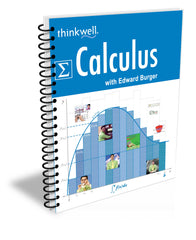6.1 Integration and Accumulation of Change
6.1.1 Antidifferentiation
6.1.2 Antiderivatives of Powers of x
6.1.3 Antiderivatives of Trigonometric and Exponential Functions
6.1.4 Undoing the Chain Rule
6.1.5 Integrating Polynomials by Substitution
6.1.6 Integrating Composite Trigonometric Functions by Substitution
6.1.7 Integrating Composite Exponential and Rational Functions by Substitution
6.1.8 More Integrating Trigonometric Functions by Substitution
6.1.9 Choosing Effective Function Decompositions
6.1.10 Approximating Areas of Plane Regions
6.1.11 Areas, Riemann Sums, and Definite Integrals
6.1.12 The Fundamental Theorem of Calculus, Part I
6.1.13 The Fundamental Theorem of Calculus, Part II
6.1.14 Illustrating the Fundamental Theorem of Calculus
6.1.15 Evaluating Definite Integrals
6.1.16 Long Division
6.1.17 More Calculus of Inverse Trigonometric Functions
6.1.18 Deriving the Trapezoidal Rule
6.1.19 An Example of the Trapezoidal Rule
6.1.20 An Introduction to Integrals with Powers of Sine and Cosine
6.1.21 Integrals with Powers of Sine and Cosine
6.1.22 Integrals with Even and Odd Powers of Sine and Cosine
6.1.23 Integrals of Other Trigonometric Functions
6.1.24 Integrals with Odd Powers of Tangent and Any Power of Secant
6.1.25 Integrals with Even Powers of Secant and Any Power of Tangent
6.1.26 An Introduction to Integration by Parts
6.1.27 Applying Integration by Parts to the Natural Log Function
6.1.28 Inspirational Examples of Integration by Parts
6.1.29 Repeated Application of Integration by Parts
6.1.30 Algebraic Manipulation and Integration by Parts
6.1.31 Finding Partial Fraction Decompositions
6.1.32 Partial Fractions
6.1.33 The First Type of Improper Integral
6.1.34 The Second Type of Improper Integral
6.1.35 Infinite Limits of Integration, Convergence, and Divergence






